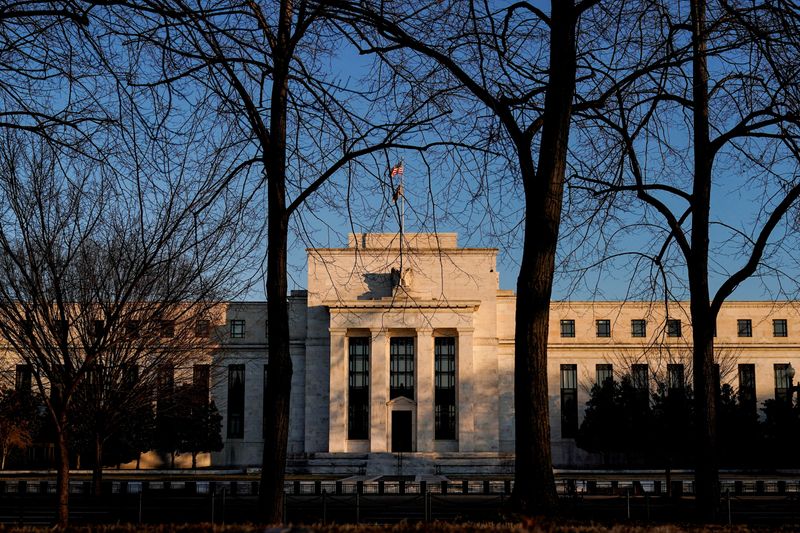[ad_1]

© Reuters. FILE PHOTO: The Federal Reserve building is seen in Washington, U.S., January 26, 2022. REUTERS/Joshua Roberts/File Photo
A look at the day ahead in European and global markets from Wayne Cole
It's set to be a pivotal week as the Federal Reserve leads a quintet of rich-world central bank meetings that will test market optimism for early and rapid-fire rate cuts next year.
The U.S. consumer price report for November on Tuesday will also influence the outlook, with analysts forecasting an unchanged headline rate and a 0.3% rise in the core rate.
The Fed meets Wednesday ahead of “Super Thursday”, when the European Central Bank, the Bank of England, the Swiss National Bank and Norges Bank all meet. Steady outcomes are expected except for Norway, where there might be a hike given the weakness of the crown.
There is talk, however,that the SNB might consider intervention to restrain the franc, which hit a nine-year high on the euro last week. [ECILT/US] [ECILT/EU] [ECILT/GB]
The ECB meeting is also shaping up to be an eventful one, given that inflation has slowed enough for even arch-hawk Isabel Schnabel to take a sudden dovish turn.
Analysts assume other hawks, led by the Bundesbank, will push back against market pricing for cuts starting in March or April, but it's an open question whether they will be in the majority.
As for the Fed, the initial focus will be on the FOMC “dot plots” for rates and whether they will stick to 50 basis points of easing next year or nudge that higher. The last plots also had 125 basis points of cuts for 2025 and another 100 basis points the year after.
Attention will then turn to Fed Chair Jerome Powell's media conference where he will have an opportunity, should he choose, to push back against market pricing for early cuts.
Markets have already pared pricing for a March easing to 46% following last Friday's upbeat payrolls report, while a May cut is put at a 58% chance and around 100 basis points of easing is implied for all of 2024.
Goldman Sachs has brought forward its call for rate cuts to start in the third quarter of next year, rather than the fourth quarter, and has 95 basis points of easing pencilled in for 2024.
Chinese blue chips slid to five-year lows after data showed consumer prices fell 0.5% in November, the sharpest drop since late 2020.
The Treasury market faces a test of its own in the shape of $108 billion in new supply of three-year, 10-year and 30-year paper. Yields on 10-year notes are holding at 4.24%, after rising on Friday in the wake of the jobs report, although they still ended flat on the week. [US/]
Oil prices idled after sliding 3.9% last week to five-month lows amid doubts that all OPEC+ members would stick with supply cuts. Prices did get some support on Friday when Washington announced it would rebuild its strategic oil reserves. [O/R]
The market will also be watching the outcome of the COP28 climate summit, which is working on a first-of-its-kind deal to phase out the world's use of fossil fuels.
Oh, and it's not impossible Britain could have a new Prime Minster before the week is out as Rishi Sunak faces a COVID-19 inquiry and a crunch vote in parliament on his plan to revive a policy to send asylum seekers to Rwanda.
Key developments that could influence markets on Monday:
– Appearances by ECB board member Elizabeth McCaul and Riksbank Deputy Governor Aino Bunge (NYSE:)
– New York Fed one-year inflation expectations for November
(By Wayne Cole; Editing by Edmund Klamann)
[ad_2]
Source link

